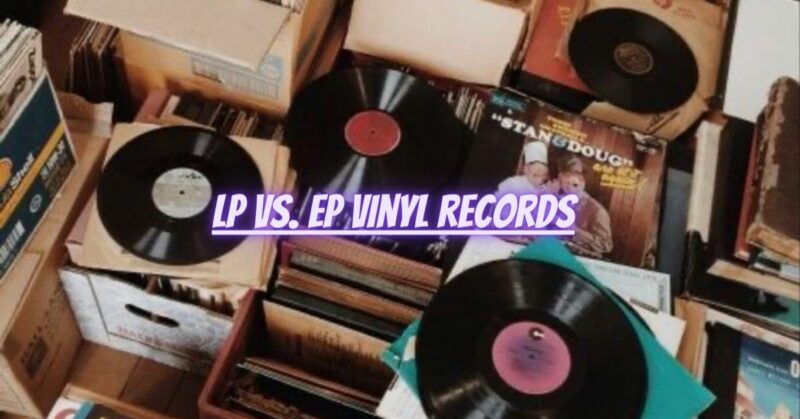Vinyl records are available in different formats, including LPs (Long-Playing) and EPs (Extended Plays). These formats offer distinct listening experiences and have their own purposes and characteristics. Understanding the differences between LPs and EPs can help collectors and music enthusiasts make informed decisions when building their vinyl collections. In this article, we will explore the key features of LP and EP vinyl records and discuss their respective advantages and uses.
- LP (Long-Playing) Vinyl Records: LP records are typically associated with full-length albums and offer an immersive listening experience. Here are some key features of LPs:
- Size: LPs are 12 inches in diameter, providing ample space for artwork, detailed liner notes, and other extras.
- Playing Time: LPs play at 33 1/3 revolutions per minute (RPM) and can hold a significant amount of music. On average, each side of an LP can accommodate approximately 22 minutes of music, resulting in a total playing time of around 45-50 minutes for a standard single-disc release.
- Content: LPs are ideal for comprehensive musical experiences, as they allow artists to develop concepts, explore themes, and showcase a range of songs and styles. They are commonly used for full-length albums, providing artists the opportunity to express their vision and creativity over a longer duration.
- EP (Extended Play) Vinyl Records: EP records are shorter in duration and are often used for releases that are smaller in scale or serve specific purposes. Here are some key features of EPs:
- Size: EPs can vary in size, but the most common format is a 7-inch record.
- Playing Time: EPs generally play at 45 revolutions per minute (RPM) and hold less music compared to LPs. Typically, each side of an EP can accommodate around 3-5 minutes of music, resulting in a total playing time of 10-15 minutes for a standard single-disc EP release.
- Content: EPs are often used for various purposes, such as introducing new artists, showcasing a few standout tracks, releasing limited edition or promotional material, or offering a more concise and focused musical experience. EPs allow artists to experiment, release smaller collections of songs, or provide fans with unique and exclusive content.
- Choosing the Right Format: When building your vinyl collection, it’s important to consider your preferences and the intended listening experience. LPs are ideal for immersing yourself in a full-length album, enjoying a cohesive body of work, and exploring an artist’s artistic vision. EPs, on the other hand, can be a great choice for sampling new artists, collecting standout tracks, or obtaining exclusive and limited-edition releases. They provide a condensed and focused musical experience.
Conclusion: LPs and EPs are two distinct vinyl record formats, each offering unique benefits and listening experiences. LPs provide a comprehensive and immersive journey through full-length albums, while EPs offer a more condensed and focused musical experience. Consider your preferences, the intended purpose, and the artist’s vision when selecting between LPs and EPs for your vinyl collection. Embrace the diversity of vinyl formats and enjoy the timeless charm of analog music in whichever format you choose.


